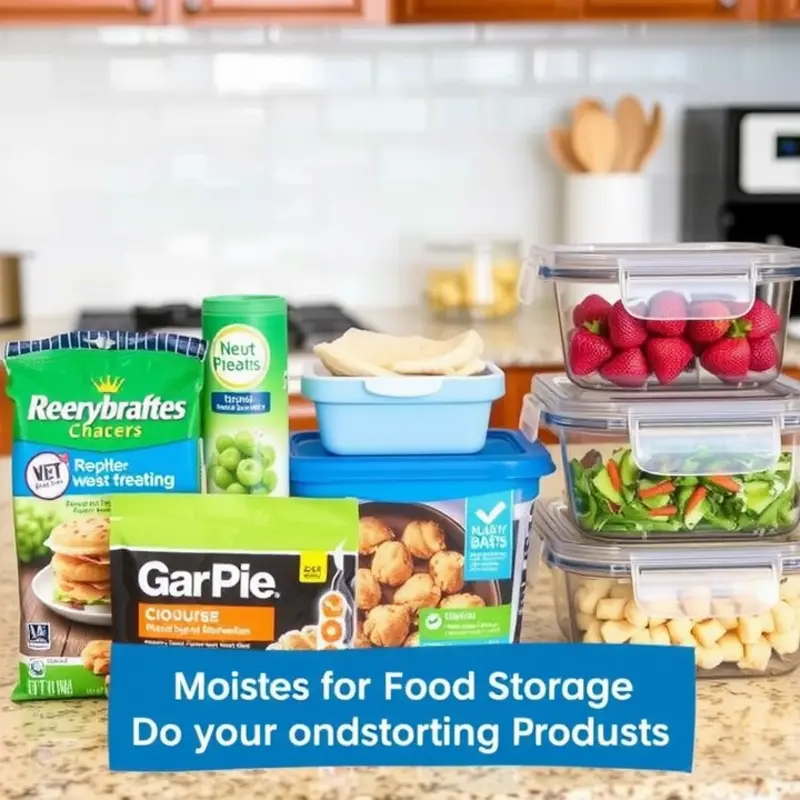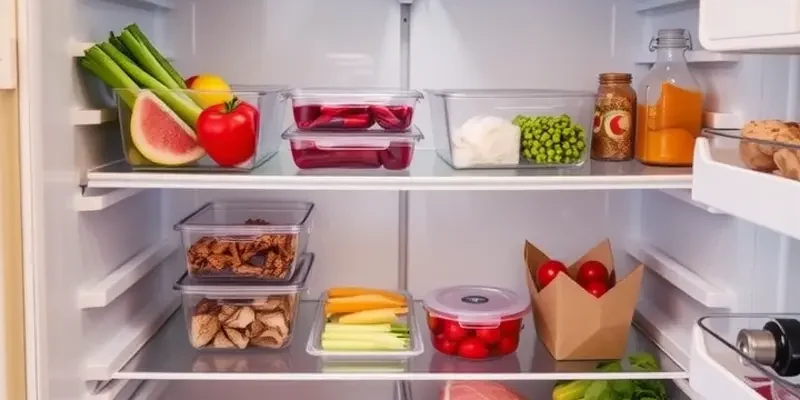Properly managing moisture in your refrigerator can significantly prolong the life of your food and minimize waste. Understanding how to keep refrigerated goods dry is essential for anyone looking to manage their food storage effectively. This guide will provide you with actionable tips that make it easy to maintain a clean and efficient fridge, ultimately ensuring your food remains fresh longer while reducing spoilage.
The Importance of Moisture Control

Moisture control is a fundamental aspect of keeping food fresh in your refrigerator. Different food types react variably to humidity, necessitating an understanding of how moisture influences preservation. Vegetables, for example, generally prefer a more humid setting to maintain their crispness. In contrast, baked goods and certain fruits thrive in a drier environment. By adjusting the humidity settings in your fridge, you can extend the lifespan of these items.
Excessive moisture creates a breeding ground for mold and bacteria, both of which are enemies of food preservation. Mold spores, invisible to the naked eye, can spread rapidly in damp conditions. This leads to visible mold growth, rendering food unsafe to eat. Similarly, bacteria thrive in these environments, accelerating spoilage and increasing the risk of foodborne illnesses. Keeping moisture in check ensures these hazards are minimized, allowing your refrigerated goods to remain safe and enjoyable.
From a scientific perspective, controlling moisture in your fridge involves regulating the relative humidity. Humidity can be controlled via crisper drawers with adjustable ventilation settings. These allow you to customize the environment for specific food types, promoting optimal moisture levels.
Paying attention to how you store food is equally vital. Storing foods in airtight containers can prevent moisture from seeping in, while also deterring the spread of odors. This extends beyond moisture control; it’s also a great strategy for reducing food waste and preserving flavors. It’s important to consider how eco-smart kitchen storage solutions can support moisture management while also embracing sustainable practices.
Another practical tip involves regularly checking and cleaning your refrigerator. Spills and condensation build-up not only contribute to excess moisture but can also harbor bacteria. Wiping down surfaces and cleaning shelves can significantly reduce the likelihood of spoilage.
Strategically placing moisture-absorbing materials, like baking soda or specially designed moisture panels, can also aid in maintaining a dry environment. While precision might be required in assessing the specific needs of different foods, the overarching goal remains: keeping the interior of your refrigerator as dry as needed to uphold freshness.
In essence, mastering moisture control in your refrigerator combines practical strategies with a deeper understanding of how humidity affects food. It empowers you to make informed decisions, thus reducing waste and optimizing the preservation of your dry refrigerated goods.
Practical Tips for Keeping Food Dry

Minimizing moisture in your refrigerator is crucial for extending the shelf life of your food. Moisture-absorbing products can be your first line of defense. Silica gel packs, for instance, are excellent at absorbing excess moisture. While traditionally used for storage, they’re also beneficial in your fridge. Place them near produce and other moisture-prone items to enhance their longevity.
Proper food packaging is another essential step. When storing leftovers, invest in airtight containers. This not only prevents moisture entry but also helps in preserving flavor and nutrition. Similarly, ensure fresh foods like meats and vegetables are wrapped securely. Using their original packaging with additional sealing methods can be effective. Vacuum sealing is an excellent option if available, as it removes air and reduces moisture buildup.
Temperature settings play a pivotal role in keeping food dry and fresh. Set your refrigerator between 37°F and 40°F. This range is optimal for food preservation without freezing items like produce. A regularly calibrated thermometer can help you maintain this temperature. Ambient conditions can also affect this, so adjusting according to the seasons will optimize your fridge’s environment.
Regular maintenance practices cannot be overstated. Cleaning spills are critical, as stagnant liquid can escalate into mold and bacteria breeding grounds. Develop a habit of wiping down surfaces regularly. Make sure to inspect the seals on your door. A poor seal allows warm air in, leading to condensation. If you notice cracked or loose seals, it may be time for a replacement.
Implementing these straightforward practices can contribute significantly to reducing waste and improving food management. Not only will you save money, but you will also minimize your carbon footprint. Interested in more environmentally conscious storage tips? Check out Eco-Smart Kitchen Storage for further guidance.
Final words
Keeping your refrigerated goods dry is essential for maximizing freshness and shelf life, while minimizing waste. Implementing simple practices such as using moisture-absorbing products, organizing your refrigerator, and ensuring proper sealing of food can lead to significant improvements in your food storage. With a bit of awareness and effort, you can transform your fridge into an efficient and user-friendly food management system that supports your healthy eating goals while reducing unnecessary waste. Start adopting these practical tips today for a more sustainable kitchen!







